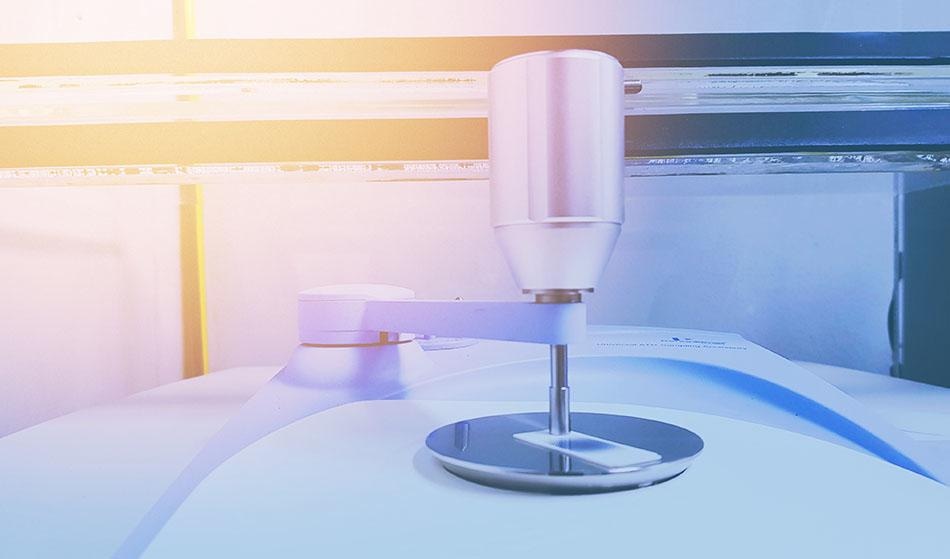
Ken Stocker / Shutterstock
Nano-FTIR (nanoscale Fourier transform infrared spectroscopy) is a scanning probe technique that is based on the combination of Fourier transform infrared spectroscopy (FTIR) and scattering-type scanning near-field optical microscopy (s-SNOM).
Nano-FTIR is used for a rapid and authentic chemical identification of wide-ranging materials at the nanometer scale. Nano-scale imaging with chemical sensitivity is an efficient method to study the formation and composition of unique emergent properties of materials that are used in drug development. It is also used for the mapping of minerals in biological samples. This article focusses on the direct or indirect use of Nano FTIR in pharmaceutical analysis.
Nano-FTIR with a Spatial Resolution of 20 nm is Extensively Used in Research
- Nano FTIR with its 20 nm spatial resolution, is used to study the natural nanostructures, i.e., mineral particles in shells and bones. On the polished sections of Mytilus edulis shells, a reproducible vibrational resonance within all biocalcite microcrystals, and distinctly different spectra on bioaragonite were analyzed.
- Multicomponent phosphate bands were observed on human tooth sections using Nano FTIR. The spectral variance was found characteristically near tubuli in dentin which proves a chemical or structural variation of the apatite nanocrystals.
- Nano-FTIR sensitively responds to structural disorder. Therefore, it is used to study biomineral formation and aging.
- Nano-FTIR is suitable for the analysis and identification of composite materials and helps in the clinical investigation of osteopathy.
- Nano-FTIR is used to develop molecular fingerprints at a 20 nm spatial resolution, i.e., a standard infrared database of molecular vibrations that can be effectively used for the identification of organic materials in minute quantities and at an ultrahigh spatial resolution.
- Nano-FTIR helps in the study of physical and chemical properties, i.e., samples (biological, polymers, and micro-electronics) are analyzed with regards to their varying physical and chemical properties on a nanoscale spatial resolution.
- The study of the chromatin structure is essential to every process occurring within eukaryotic nuclei. Nano spectroscopy has demonstrated the molecular difference between euchromatin and heterochromatin. It generates an infrared map of single metaphase chromosomes showing detailed information about their molecular composition, with nanometric lateral spatial resolution. There is potential for infrared Nano spectroscopy to be used to detect gene expression/suppression sites in the whole genome and thus utilize it as an early screening tool for malignancy.
Library Based Identification and Characterization of Polymers with Nano-FTIR
Previously, some of the important polymers such as polystyrene were more difficult to detect than others. However, this was made possible with the help of Nano FTIR. Library based identification and nanoscale characterization of polymers with Nano-FTIR proved to be immensely helpful in pharmaceutical research.
Nano-FTIR is Used to Analyze the Secondary Structure of Single Protein Complexes
The study of a mixture of tobacco mosaic viruses (TMV) and insulin aggregates on silicon using Nano-FTIR enabled unambiguous identification of their structures. Nano-FTIR can probe protein secondary structure on the nanometer scale and with sensitivity to individual protein complexes. The amide bonds of individual TMVs and ferritin complexes for their well-defined, robust and dominantly α-helical protein structure, insulin aggregates for exhibiting β-sheet structure and purple membranes (PMs) due to well-defined orientation of the transmembrane α-helices.
Nano-FTIR for Organic and Inorganic Material Analysis
The combined analysis of complex nanoscale material systems by correlating near-field optical data has gained significant interest. s-SNOM systems represent an ideal platform to gain novel insights into complex material systems by different near-field and AFM-based methods.
Nano FTIR not only evaluates non-invasive nanoscale material but can also identify complex polymers or analyze the secondary structure of biological specimens. It is also capable of quantitative measurements of dielectric values for polymers, the determination of free carrier concentration and mobility in low-dimensional structures. Thus, Nano FTIR has proved to be a great boon in scientific research, specifically in the pharmaceutical industry for the characterization and understanding of novel compounds.
Disclaimer: The views expressed here are those of the author expressed in their private capacity and do not necessarily represent the views of AZoM.com Limited T/A AZoNetwork the owner and operator of this website. This disclaimer forms part of the Terms and conditions of use of this website.